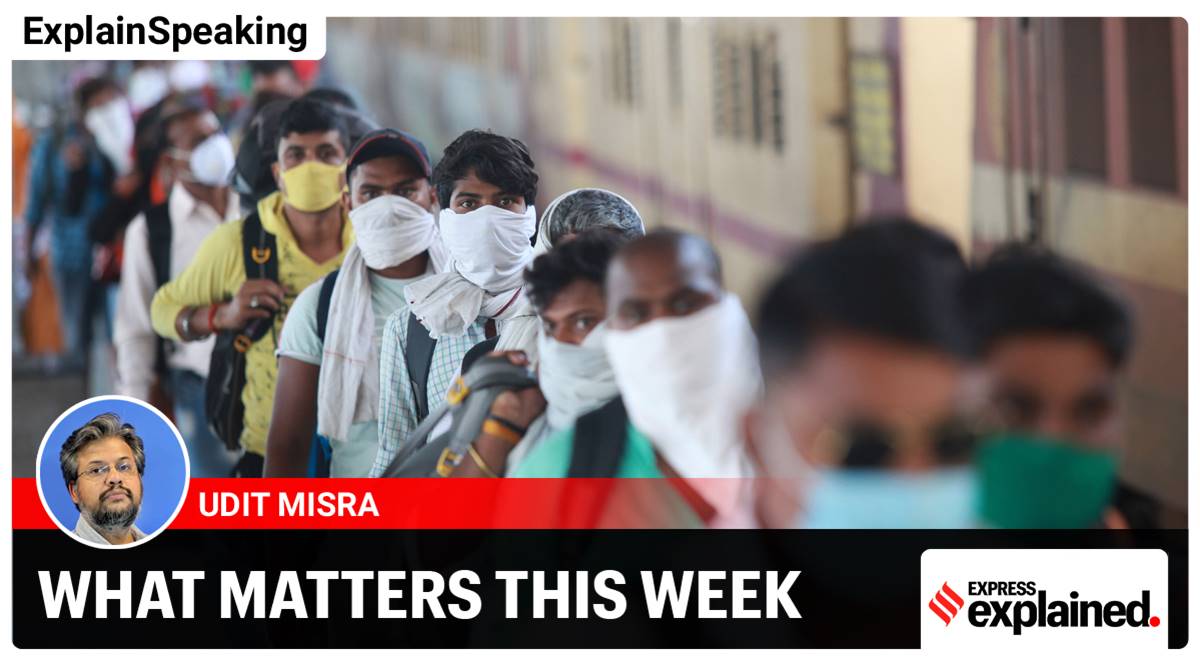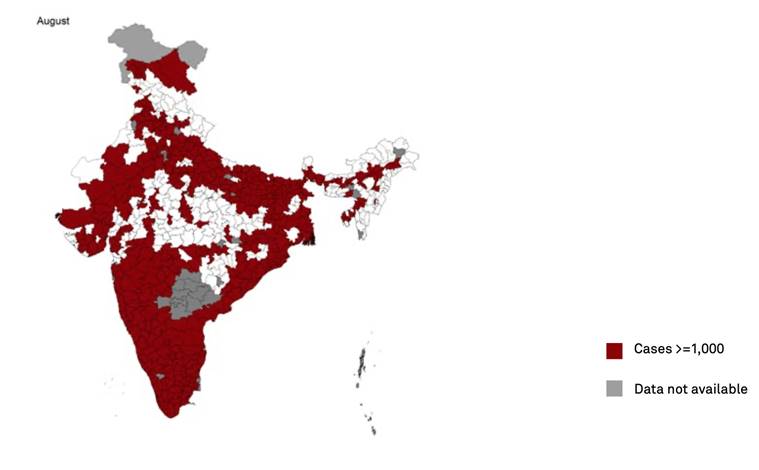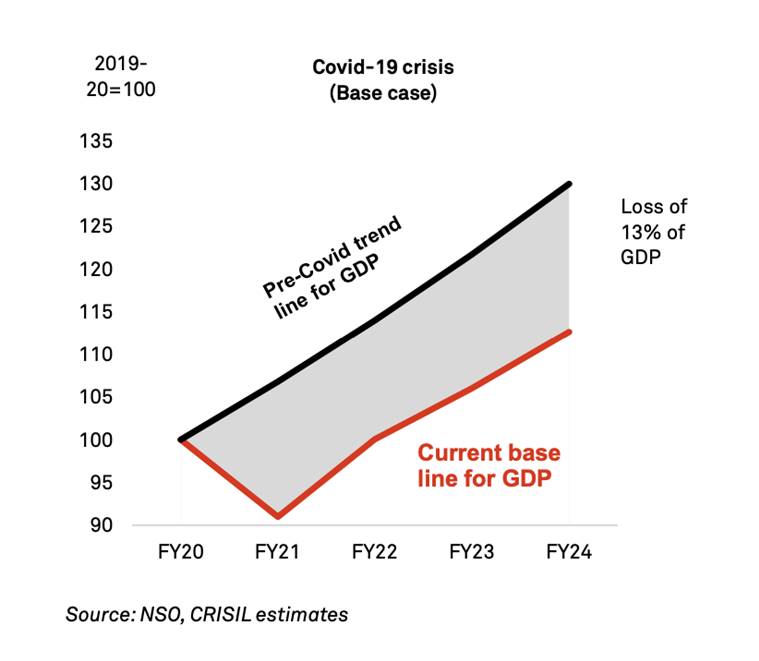
The Indian Express
ExplainSpeaking: Why unemployment could become a bigger headache for the govt
Rapid spread of Covid-19 and inadequate spending by government could result in India suffering a permanent loss of Rs 30 lakh crore, which is roughly the size of the Union Budget for 2020-21
by Udit MisraDear Readers,
This week started with several economists coming out with their revised GDP growth expectations for India in response to the official GDP growth data that was released on August 31. With the economy shrinking more than what most analysts expected, the revisions — be it India Ratings and Research, Goldman Sachs, ICRA or Crisil — were all in the negative direction.
For instance, Crisil in its September update (over the May assessment) stated the following two main reasons: “With the pandemic’s peak not yet in sight and the government not providing adequate direct fiscal support, the downside risks to our earlier forecast have materialised”.
https://images.indianexpress.com/2020/08/1x1.png
In other words, in May, the two things Crisil analysts feared may go wrong have gone wrong.
One, Covid continues to spread unabated. Look at the three India maps (Source: Crisil) with the number of districts reporting more than 1,000 cases. See how rapidly the whole country is now getting afflicted. As of the latest data, India is adding close to 1 lakh cases every single day.

Two, in May, Crisil had expected that the government would spend an additional 1% of GDP over and above the 1.2% of GDP that was announced in the immediate aftermath of the lockdown. But this hasn’t happened.
As a result, Crisil estimates that India will suffer a “permanent” loss of 13% of real GDP over the medium term. This is much higher than the 3% average loss that most other economies in Asia-Pacific will suffer.

Permanent loss implies that the economy will not be able to recover this GDP value. A simple way to understand permanent loss to the GDP is to consider the loss to the economy due to the summer vacations that could not be taken this year or the three haircuts that were subsumed in the fourth one.
In everyday cash terms, this loss is going to be around Rs 30 lakh crore. Simply put, this period of economic disruption will rob India of Rs 30 lakh crore. To put this in perspective, the government has put much less than Rs 3 lakh crore through the Atmanirbhar Bharat Abhiyan package in the economy.

Chart below (Source: Crisil) shows what permanent loss looks like for an economy.
This sharp economic contraction will show up in massive unemployment and disguised employment. In this regard, I would highly recommend watching Mahesh Vyas, the CEO of Centre for Monitoring Indian Economy (CMIE), during The Indian Express Explained event detailing the state of unemployment in the country.
Vyas explained how grave an employment challenge India faces. There is an existing pool of over 35 million (or 3.5 crore) unemployed people in India. Since the pandemic hit, as many as 21 million salaried jobs have been lost and these are not likely to be recovered in a hurry.

But the already unemployed number does not take into account the millions who have “joined” the farm sector as the jobs dried up in the rest of the economy. While counted as employed, these millions are more accurately characterised as disguised unemployment.
To this pool of 35 million, India adds 2 million people of the working age group — that is, 15 years to 59 years — each month. But since we have a labour force participation rate (LFPR) of just 40%, only about 0.8 million seek employment each month.
The LFPR is the proportion of people in a population who are seeking work. It is calculated by adding the employed and the unemployed and showing them as a proportion of the total population. According to Vyas, at around 40%, India has a considerably low LFPR as compared to over 60% in developed countries.
But even at an undesirably low LFPR, in a year, India needs to create around 9.6 million (or roughly 1 crore) new jobs. So by the end of this financial year, without any further jobs being lost, India would need close to 4.5 crore jobs.
Now CMIE’s data shows between 2016-17 and 2019-20 the total number of employed people in the country stayed stagnant — from 40.7 crore to 40.3 crore.
Thus, it is unlikely that over the next few years — when either the GDP will contract or grow at a slow pace — jobs creation will happen at a fast pace.
And yet with each year, at least 1 crore young Indians will join the labour force demanding work.
Seen from this context, one can better appreciate the other news stories on the Indian economy this week.
For one, with more and more labourers joining back the farm sector, the issue of Minimum Support Prices — that are announced by the government — will increasingly come in sharp focus. Indian farming was never remunerative and is likely to be even less now with more people dependent on it.
As the protest in Haryana and Punjab perhaps signal, farmers will increasingly want more support from the government even as the government, which is facing a massive financial crunch, tries to whittle down its payouts to the farm sector.
In the non-farm sector, too, the Central government’s preference to push growth by providing more loans through the banks — instead of spending the money directly as most economists suggest — is the main reason why Finance Minister Nirmala Sitharaman said even private sector banks will have to contribute towards the implementation of government schemes.
This is quite a remarkable shift in the stance of the Narendra Modi led government — from PM Modi criticising “phone banking” in public sector banks to asking even the private banks to push government schemes.
Anyway, stay safe because that is India’s best chance of staging an economic recovery.
Udit